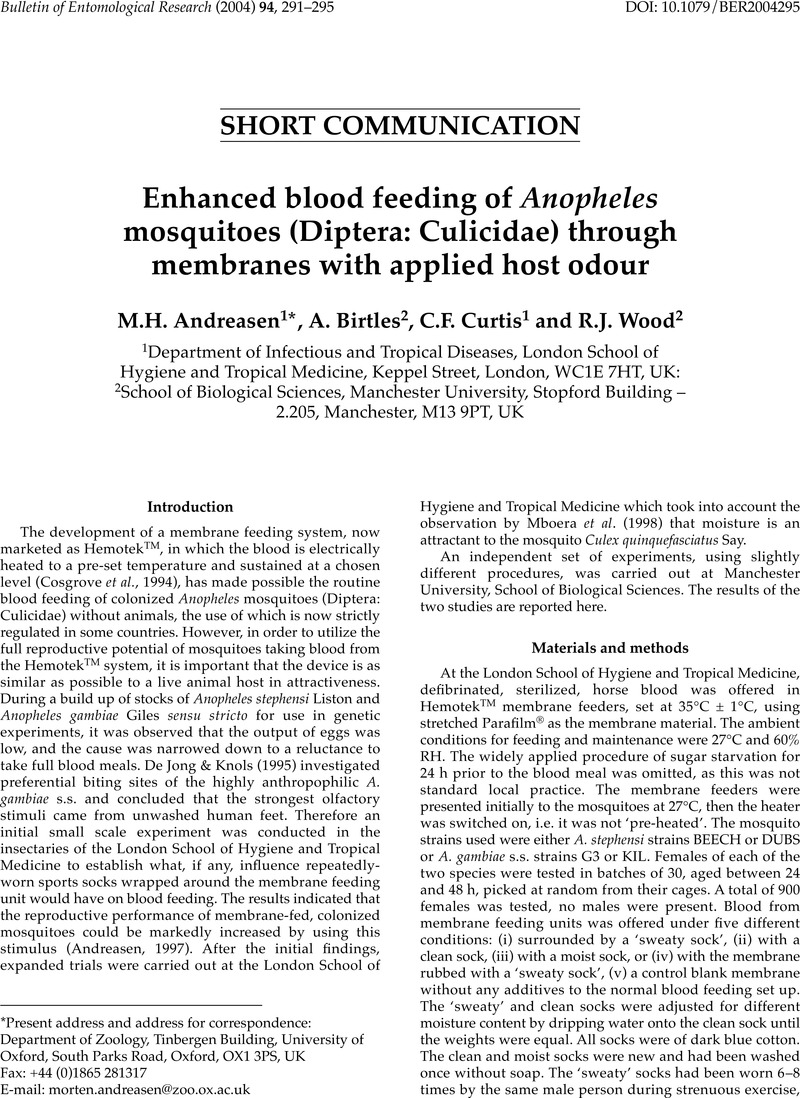Crossref Citations
This article has been cited by the following publications. This list is generated based on data provided by Crossref.
Dube, Fitsum Fikru
Tadesse, Kassahun
Birgersson, Göran
Seyoum, Emiru
Tekie, Habte
Ignell, Rickard
and
Hill, Sharon R
2011.
Fresh, dried or smoked? repellent properties of volatiles emitted from ethnomedicinal plant leaves against malaria and yellow fever vectors in Ethiopia.
Malaria Journal,
Vol. 10,
Issue. 1,
Omolo, M.O.
Njiru, B.
Ndiege, I.O.
Musau, R.M.
and
Hassanali, A.
2013.
Differential attractiveness of human foot odours to Anopheles gambiae Giles sensu stricto (Diptera: Culicidae) and variation in their chemical composition.
Acta Tropica,
Vol. 128,
Issue. 1,
p.
144.
Pietri, J. E.
Cheung, K. W.
and
Luckhart, S.
2014.
Knockdown of mitogen‐activated protein kinase (MAPK) signalling in the midgut of Anopheles stephensi mosquitoes using antisense morpholinos.
Insect Molecular Biology,
Vol. 23,
Issue. 5,
p.
558.
Dormont, Laurent
Mulatier, Margaux
Carrasco, David
and
Cohuet, Anna
2021.
Mosquito Attractants.
Journal of Chemical Ecology,
Vol. 47,
Issue. 4-5,
p.
351.
Omolo, Maurice O.
Ndiege, Isaiah O.
Hassanali, Ahmed
and
Renou, Michel
2021.
Semiochemical signatures associated with differential attraction of Anopheles gambiae to human feet.
PLOS ONE,
Vol. 16,
Issue. 12,
p.
e0260149.
Faber, Peter A.
Dorai, Ashritha J.A.P.S.
and
Chown, Steven L.
2022.
A standardised low-cost membrane blood-feeder for Aedes aegypti made using common laboratory materials.
PeerJ,
Vol. 10,
Issue. ,
p.
e14247.



